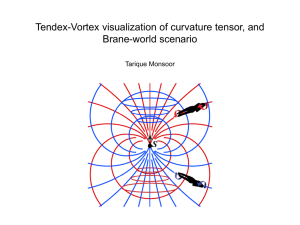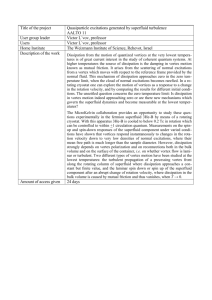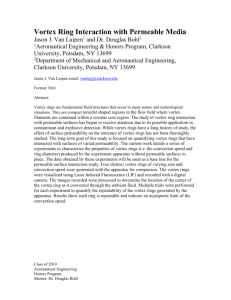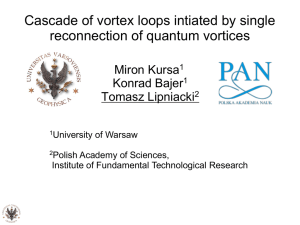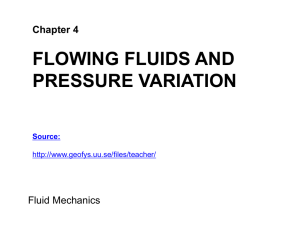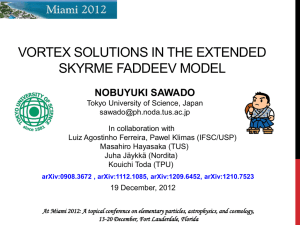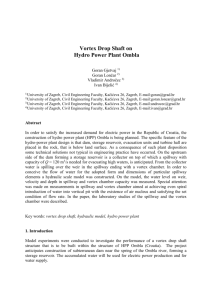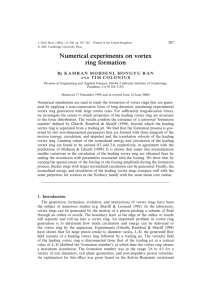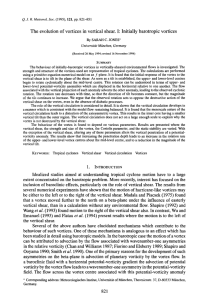Supplementary Data
advertisement
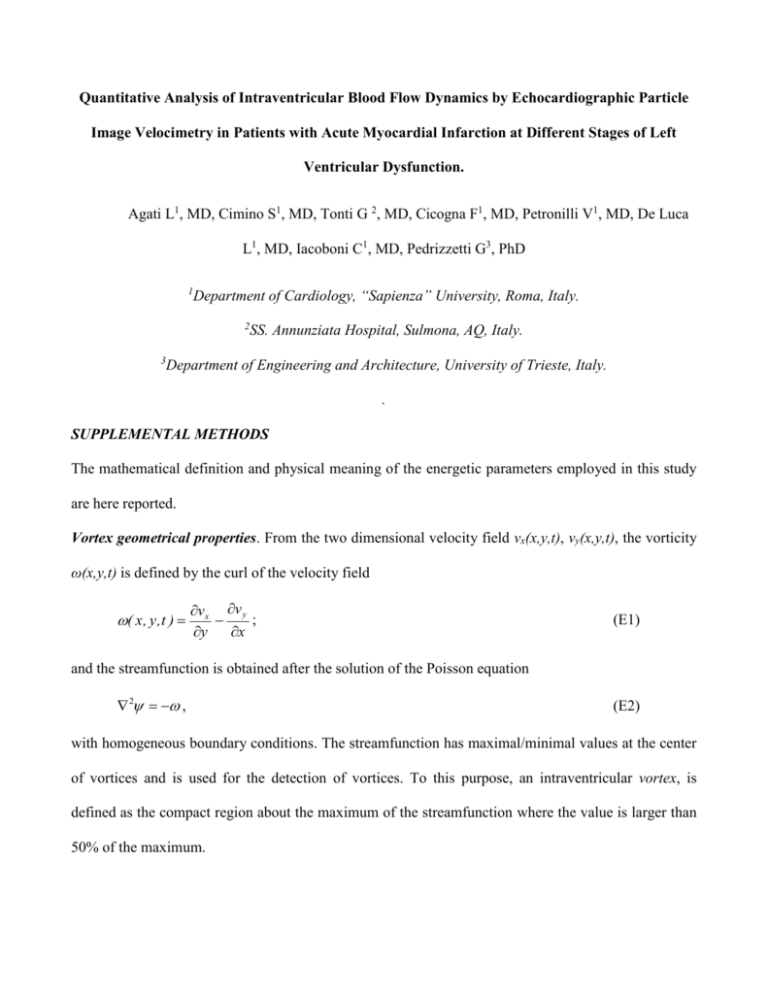
Quantitative Analysis of Intraventricular Blood Flow Dynamics by Echocardiographic Particle Image Velocimetry in Patients with Acute Myocardial Infarction at Different Stages of Left Ventricular Dysfunction. Agati L1, MD, Cimino S1, MD, Tonti G 2, MD, Cicogna F1, MD, Petronilli V1, MD, De Luca L1, MD, Iacoboni C1, MD, Pedrizzetti G3, PhD 1 Department of Cardiology, “Sapienza” University, Roma, Italy. 2 3 SS. Annunziata Hospital, Sulmona, AQ, Italy. Department of Engineering and Architecture, University of Trieste, Italy. . SUPPLEMENTAL METHODS The mathematical definition and physical meaning of the energetic parameters employed in this study are here reported. Vortex geometrical properties. From the two dimensional velocity field vx(x,y,t), vy(x,y,t), the vorticity ω(x,y,t) is defined by the curl of the velocity field ( x , y ,t ) vx v y ; y x (E1) and the streamfunction is obtained after the solution of the Poisson equation 2 , (E2) with homogeneous boundary conditions. The streamfunction has maximal/minimal values at the center of vortices and is used for the detection of vortices. To this purpose, an intraventricular vortex, is defined as the compact region about the maximum of the streamfunction where the value is larger than 50% of the maximum. The average vortex properties are identified from the steady-streaming (or heartbeat-averaged) flow pattern, which represents the net flow motion made by the pulsating flow during one heartbeat, by the following dimensionless parameters. - Vortex Area: is the area of the vortex normalized with the LV area. - Vortex Length: is the distance between the higher and lower edges of the vortex, normalized with the LV axis length. - Vortex Depth: is the distance between the center of the vortex and the center of the mitral plane, normalized with the LV axis length. - Vortex Intensity: is the integral of the vorticity inside the vortex area, normalized with the vorticity integrated in absolute value over the entire LV. Energy dissipation index. Kinetic energy dissipation represents the reduction in the kinetic energy of blood that is caused by the friction mechanisms inside the flow. The kinetic energy E and the rate of dissipation by friction D are calculated at every point of the flow field from the two-dimensional EchoPIV velocity as E( x , y , t ) v 2 2 x v y2 , 2 2 2 2 v y vx v y vx v y vx ; D( x , y ,t ) 2 2 x x x y y y (E3) (E4) where ρ is the density (ρ =1050Kg/m3) and ν is the kinematic viscosity (ν=3.3×10-6 m2/s). The total energy dissipation is then the integration of the D field over the entire 2D domain inside the LV and along the entire heartbeat duration T; this value of the reduction of kinetic energy is normalized with the average value of kinetic energy in the LV during the heartbeat. In formulae the energy dissipation index is defined by DI T Ddxdydt T LV Edxdydt . (E5) T LV The energy dissipation index is a dimensionless measure of the amount of friction that occurs in the LV during the heartbeat. It increases when the flow field is spatially irregular because sharp differences in velocity correspond to higher friction between adjacently streaming laminae of fluid. Vortex and kinetic energy fluctuations indices. The entity of the kinetic energy fluctuation is characterized by the variance of the kinetic energy relatively to its average E' v T LV v x 0 v y v y 0 dxdydt 2 x 2 Edxdydt ; (E6) T LV where the subscript “0” stands for the steady streaming field. Similarly the vortex fluctuation index is defined by the variance of vorticity, normalized with the square vorticity dxdydt 2 0 W' T LV 2 dxdydt . (E7) T LV Both these parameters are borrowed from the theory of turbulence and describe the level of space-time irregularity in the flow fields that is unsteady and possibly weakly turbulent. They are expected to correlate between them and with the energy dissipation defined above, nevertheless they are computed from different physical phenomena and may provide different characterization to the intraventricular flow field. Vortex Formation Time. This parameter is computed from the mitral to measure the amount of incoming fluid that is available for vortex formation. The concept follows from the theoretical knowledge that vortex formation is a limiting process that is optimal for a certain amount of flow. Vortex formation time is defined as VFT U TE wave ; DMV (E8) where Ū is the mean velocity of the transmitral jet during the E-wave, TE-wave is the duration of rapid filling phase (E-wave) and DMV is the average diastolic diameter of the mitral orifice. The VFT can be computed from echographic data as VFT 4 VTI E EDV EF ; 3 VTI DMV (E9) where VTI is the Velocity time integral computed from the transmitral PW-Doppler, and the VTIE is the fraction computed along the E-wave only; EDV is the end diastolic LV volume. Direct Flow. The direct flow is a measure of the amount of blood volume entered into the LV during diastole that exited during the following systole. It can be computed by following individual blood trajectories as it is done in magnetic resonance. Alternatively, it can be computed by solving an advection-diffusion equation 2C 2C C C C vx vy 2 2 0 , t x y y x (E10) for a passive scalar C(x,y,t) that corresponds to the marker of atrial blood such that where C=1 that blood was received from atrium and where C=0 was in the ventricle at the beginning of diastole. This equation is solved, with initial condition of C=0 and boundary condition of C=1 at the mitral orifice, by marching in time using finite differences for computing the derivatives. The integral computed at end-systole X ES 1 C( x , y ,t LV ES )dxdy dxdy , (E11) LV provides an estimates, from the 2D velocity field, of the percentage of atrial blood that left the LV at end of systole. The direct flow used in literature normalize the left volume with the EDV, therefore can be computed as Vdirect=XES×EF.

